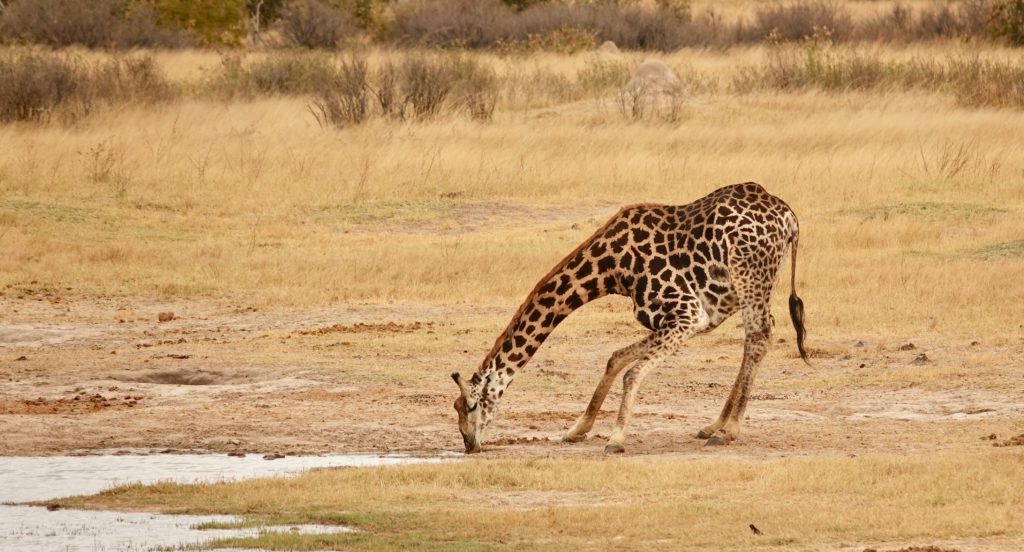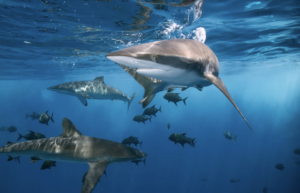
Giraffe Population Decline Across Africa


Stori Smith

Stori Smith
Senior Staff Writer for SAFE Worldwide
African elephants are an infamous martyr to human encroachment and poaching. Their population’s devastating decline inspires outrage and calls for increased conservation. But, in the shadow of this outcry, another struggling African icon still waits for witnesses. The giraffe population decline is so severe, there are fewer giraffes than elephants left on this planet.
Across Africa, the giraffe population has decreased by 40% since the 1980s. The International Union for the Conservation of Nature (IUCN) classifies them as “vulnerable” and facing a high risk of extinction. Some subspecies are already considered “critically endangered.”
Threats to Giraffes
The giraffe’s plight lies largely in habitat loss. As woodlands become ranches, the charcoal industry intensifies, and human development as a whole expands across Africa, the once widely-distributed giraffe finds its populations split into shrinking, disconnected clusters. In some countries, they’ve completely disappeared. These small, isolated groups face increased inbreeding and disease transmission.
Climate change exacerbates these challenges. Droughts have increased across sub-Saharan Africa. This decreases giraffes’ food and water resources while habitat loss limits their access to those that remain.
Like many wild species, giraffes are poached. Wildlife traffickers covet the animal’s profitable, unique hide and bones, which can serve as substitutes for elephant ivory. Many civilians struggling through conflicts across northern Kenya, Somalia, Ethiopia, and Sudan have resorted to the illegal bushmeat trade to make money. This, along with armies also relying on giraffe meat to feed their ranks, has added thousands of giraffes to civil war casualty counts.
Sources of Hope
The Convention on International Trade in Endangered Species (CITES) decided to grant the species protection in 2019. This major victory will restrict international trade and help prevent the sale of poached giraffe parts. However, international governments still need to acknowledge giraffes as an endangered species. Once they do, their wildlife agencies can contribute funding to conservation and double down on domestic giraffe part trading. The United States is a powerful participant in wildlife markets and has so far proved indecisive on adding giraffes to its Endangered Species List.
Another source of hope lives in southern African game parks where, under effective conservation-oriented management, local giraffe populations are trending up. If enough people notice giraffe population decline elsewhere and act on behalf of these iconic giants, perhaps the entire species can begin to recover.
Do your part to support giraffes! Learn more about SAFE Worldwide’s anti-poaching efforts and spread the word.
Sources
“Are Giraffes Endangered?” NRDC, 13 Aug 2019, https://www.nrdc.org/stories/are-giraffes-endangered
McGrath, Matt. “Giraffes facing ‘silent extinction’ as population plunges.” BBC News, 8 Dec. 2016, https://www.bbc.com/news/science-environment-38240760
Pepper, Elly. “Giraffes Win international Protections to Limit Their Trade.” NRDC, 22 Aug 2019, https://www.nrdc.org/experts/elly-pepper/giraffes-win-international-protections-limit-their-trade
Download the SAFE Worldwide e-coloring book on Africa’s elegant giraffes: https://safeworldwide.org/product/giraffe-e-coloring-book
Disclaimer: The opinions, beliefs and viewpoints expressed by the various authors and forum participants on this web site are their own and do not necessarily reflect the opinions, beliefs and viewpoints of SAFE Worldwide.





